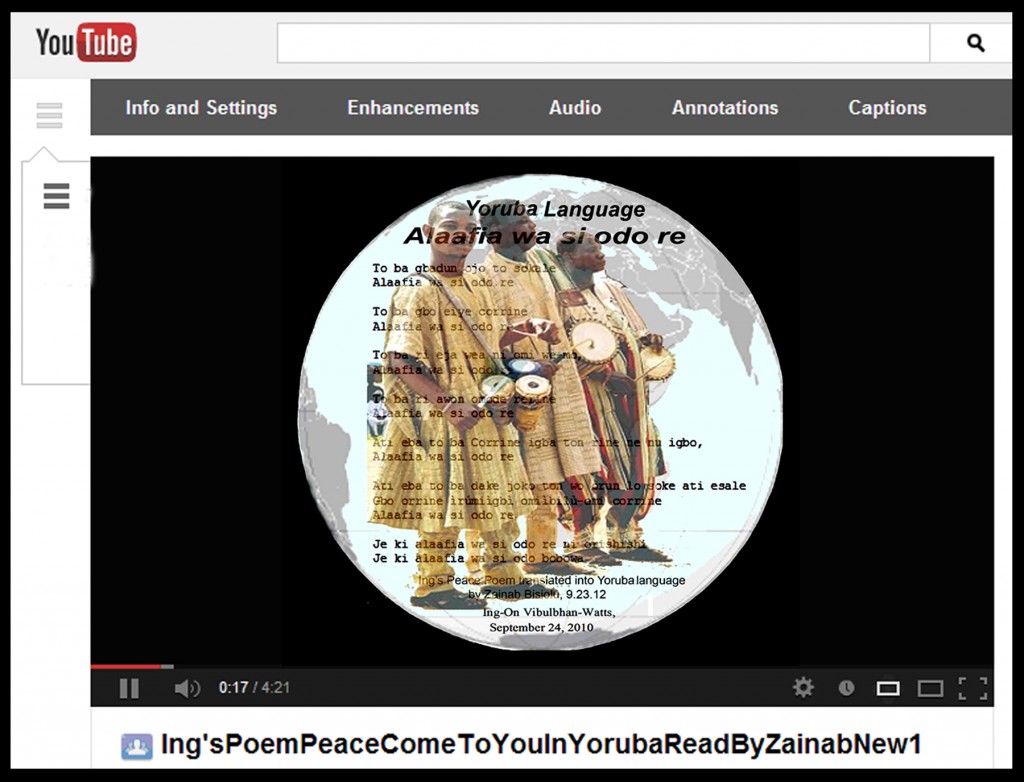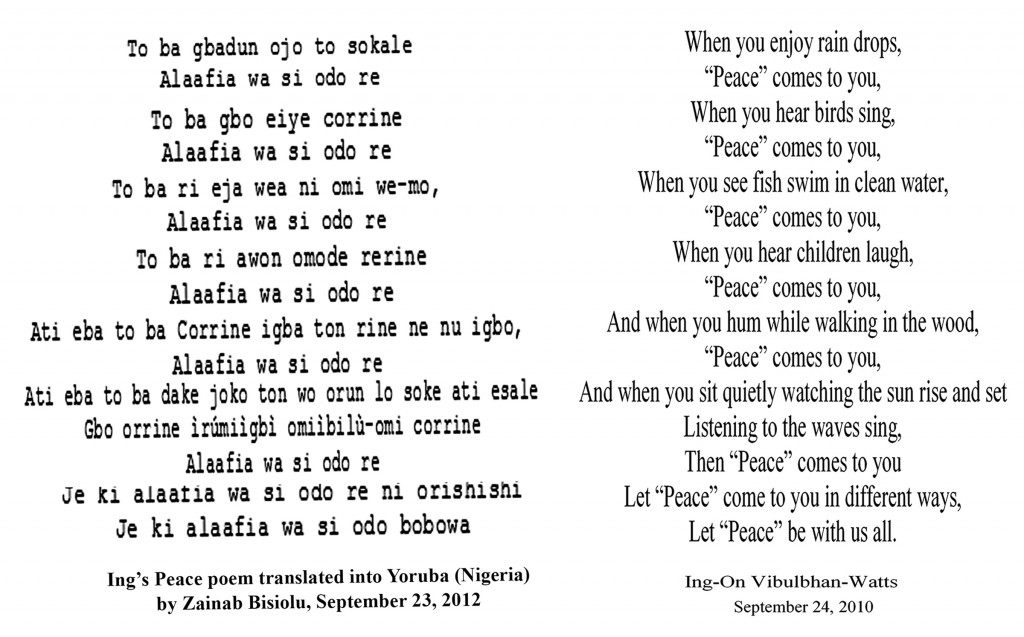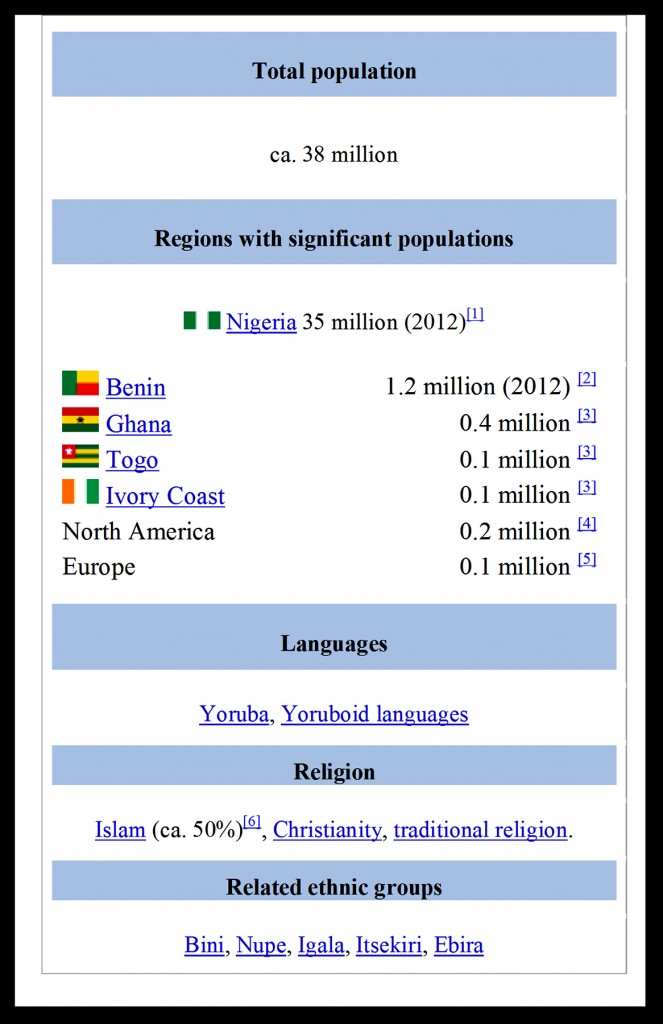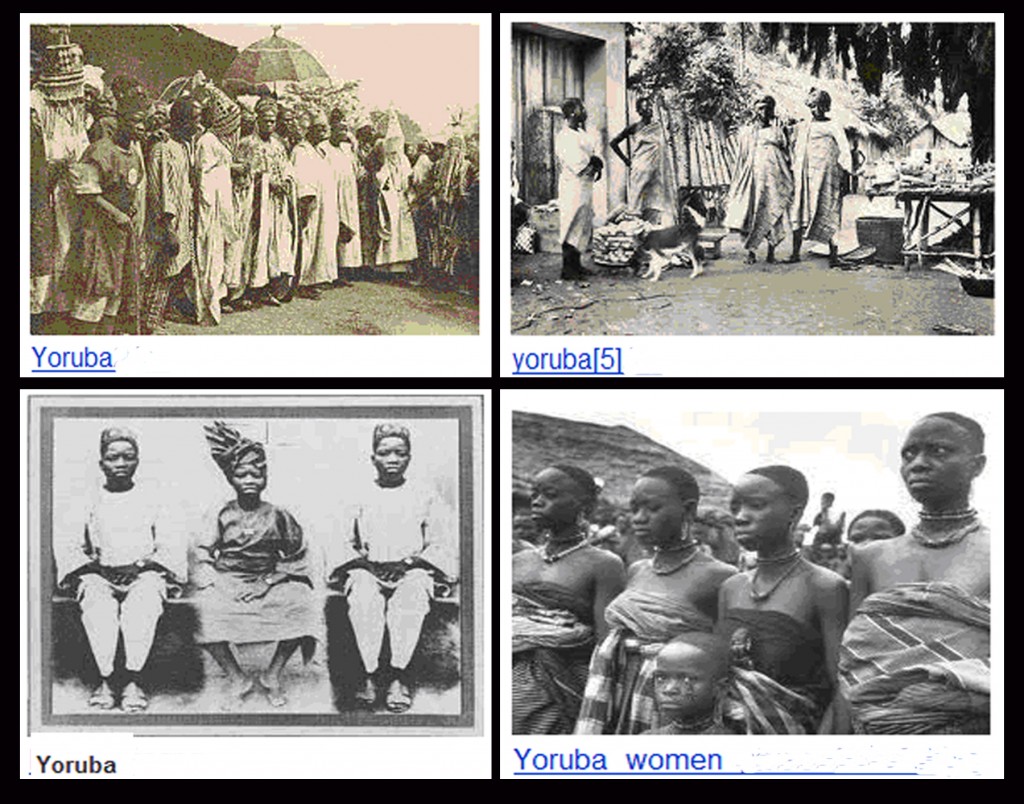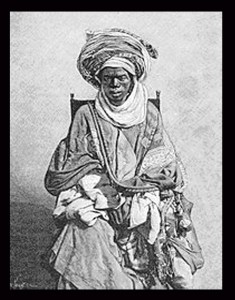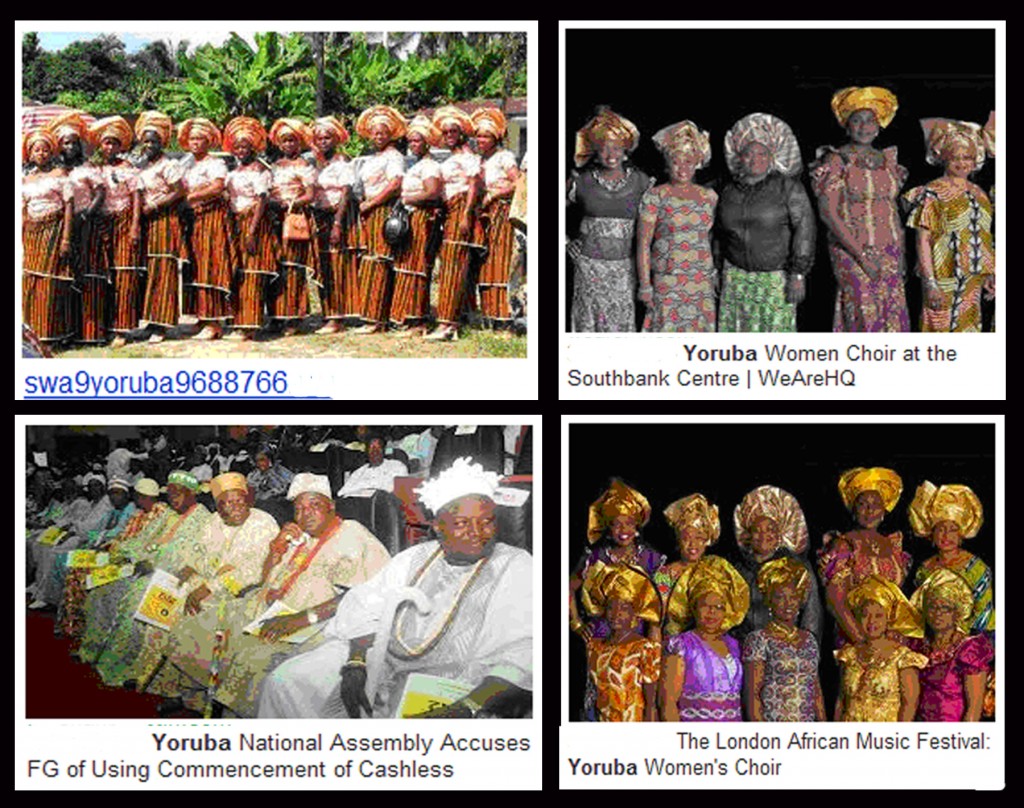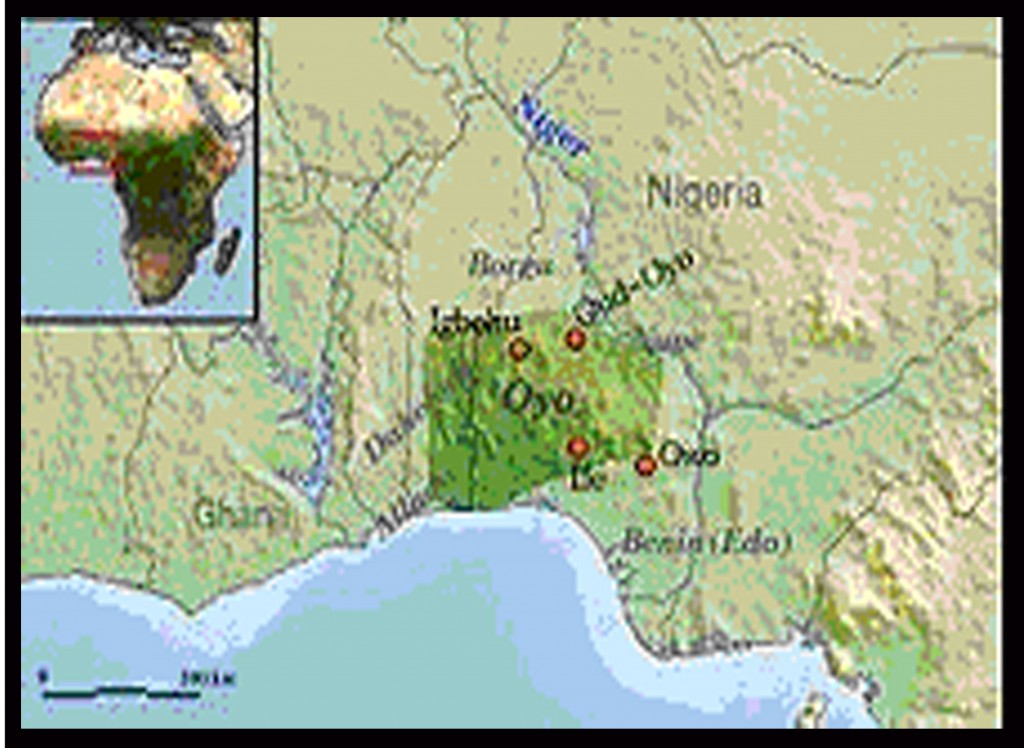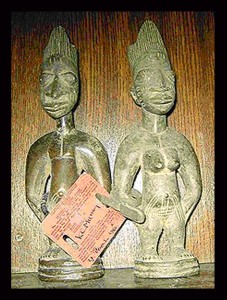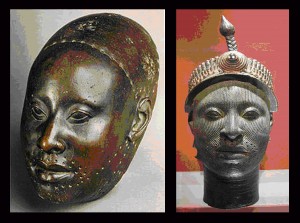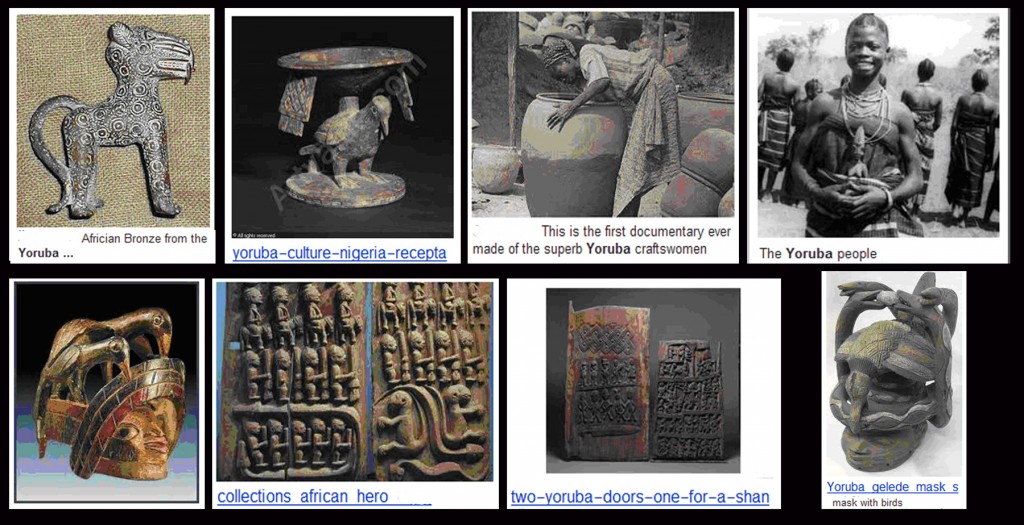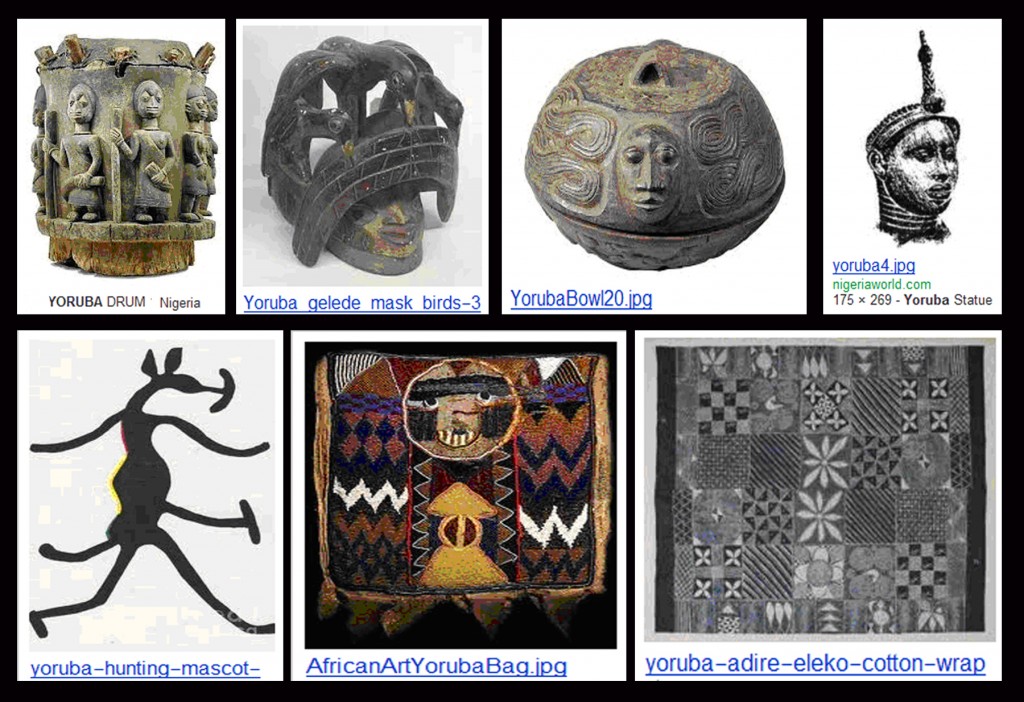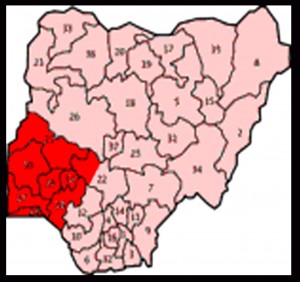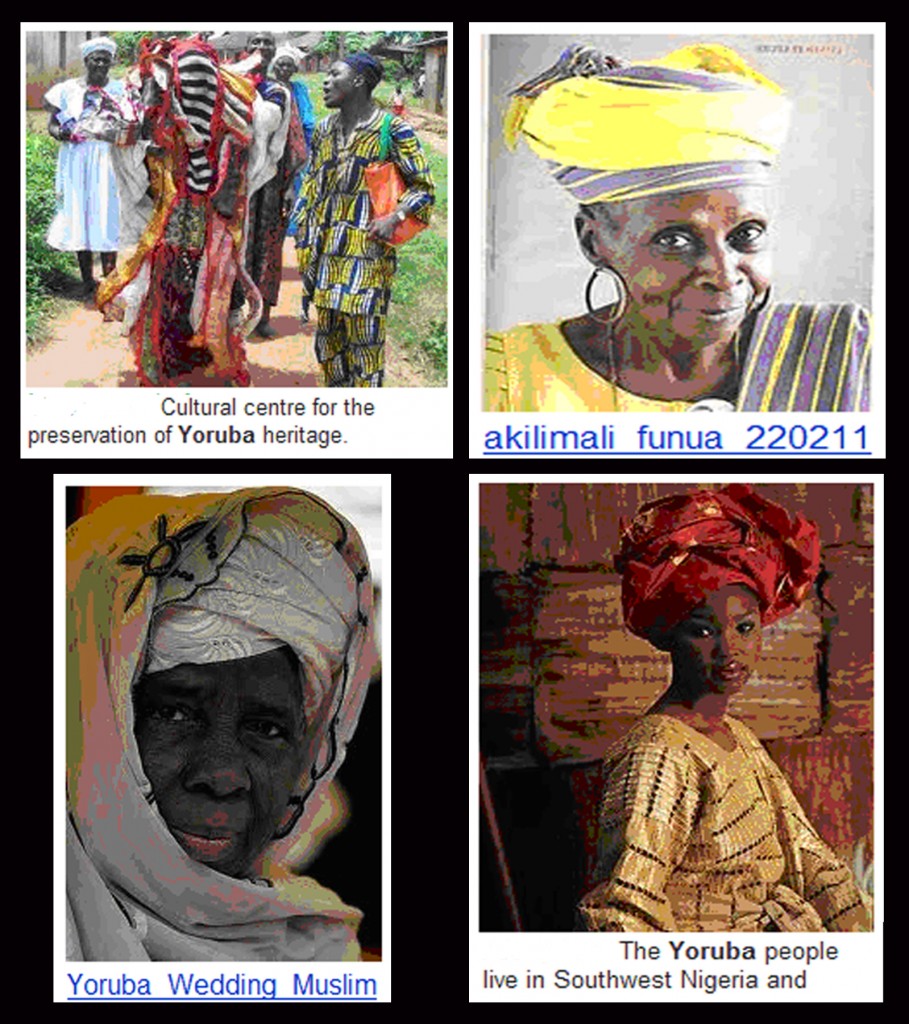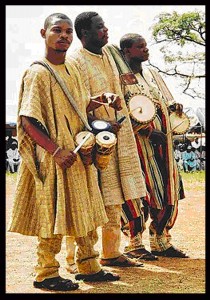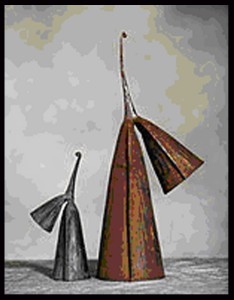Ing’s Video
Ing’sPoemPeaceComeToYouInYorubaReadByZainabNew1 (4:21 minutes)
Link to YouTube:
https://www.youtube.com/watch?v=c8Mw5WC3OWg&feature=youtu.be
Ing’s Peace poem “Peace Comes to You” in the Yoruba language
“Alaafia wa si odo re” is a Yoruba language translation of “Peace comes to you”. I am very glad and grateful to Zainab Bisiolu who was kind enough to translate my Peace poem “Peace Comes to You” into Yoruba language. After I received the translation from Zainab I had a chance to study about the Yoruba language, and the Yoruba people, from the internet. I combined some information about the Yoruba language and the Yoruba people in addition to Zainab’s translation and posted it on my website. Zainab also allowed me to record her recitation of my Peace poem in English and in the Yoruba languages. I have posted some of my Peace project videos on YouTube. I thought that it would be a good idea for me to compose a video from my peace poem with Zainab’s reciting my poem and my combining this with some pictures of people and art of Yoruba. I hope that people who do not know much about this subject can watch the video, learn and enjoy as much as I do.
Ing-On Vibulbhan-Watts, Saturday, January 06, 2013
Ing’s “Peace” poem translated into Yoruba
by Zainab Bisiolu on September 23, 2012
Hi! I enjoyed our conversation the other day. Thank you for inspiring and
enlightening me. Below in the poem in Yoruba for your website.
To ba gbadun ojo to sokale
Alaafia wa si odo re
To ba gbo eiye corrine
Alaafia wa si odo re
To ba ri eja wea ni omi we-mo,
Alaafia wa si odo re
To ba ri awon omode rerine
Alaafia wa si odo re
Ati eba to ba Corrine igba ton rine ne nu igbo,
Alaafia wa si odo re
Ati eba to ba dake joko ton wo orun lo soke ati esale
Gbo orrine ìrúmiìgbì omiìbilù-omi corrine
Alaafia wa si odo re
Je ki alaafia wa si odo re ni orishishi
Je ki alaafia wa si odo bobowa
Sincerely,
Zainab Bisiolu 9.23.2012
Yoruba language
The Yoruba language (natively èdè Yorùbá) is a Niger–Congo language spoken in West Africa. The number of speakers of Yoruba was estimated at around 20 million in the 1990s.[1] The native tongue of the Yoruba people, is spoken, among other languages, in Nigeria, Benin, and Togo and in communities in other parts of Africa, Europe and the Americas. A variety of the language, Lucumi, from olukunmi is used as the liturgical language of the Santeria religion of Cuba, Puerto Rico, and the Dominican Republic. It is most closely related to the Owo Itsekiri language spoken in the Niger-Delta and Igala spoken in central Nigeria.
Yoruba is classified within the Edekiri languages, which together with the isolate Igala form the Yoruboid group of languages within the Volta-Niger branch of the Niger-Congo phylum. The linguistic unity of the Niger-Congo phylum dates to deep prehistory, estimates ranging around 15 kya (the end of the Upper Paleolithic). The Atlantic–Congo core of this group would have formed roughly 8,000 years ago. The Benue-Congo branch (which also includes the Bantoid branch) separated from Atlantic-Congo around the 5th millennium BC, ultimately spreading out in the Bantu expansion, while Volta-Niger is one of the branches formed by the peoples who remained in the Atlantic-Congo core territory. [2]
The Yoruba group are assumed to have developed out of undifferentiated Volta–Niger populations by the 1st millennium BC. Settlements of early Yoruba speakers are assumed to correspond to those found in the wider Nigerarea from about the 4th century BC, especially at Ife. As the North-West Yoruba dialects show more linguistic innovation, combined with the fact that Southeast and Central Yoruba areas generally have older settlements, suggests a later date of immigration for Northwest Yoruba.[3]
The Yoruba dialect continuum itself consists of several dialects. The various Yoruba dialects in the Yorubaland of Nigeria can be classified into three major dialect areas: Northwest, Central, and Southeast.[4] Of course, clear boundaries can never be drawn and peripheral areas of dialectal regions often have some similarities to adjoining dialects.
- North-West Yoruba(NWY).
- Central Yoruba(CY)
- South-East Yoruba(SEY)
North-West Yoruba is historically a part of the ?y? empire. In NWY dialects, Proto-Yoruba /gh/ (the velar fricative [?]) and /gw/ have merged into /w/; the upper vowels /i ?/ and /?/ were raised and merged with /i/ and /u/, just as their nasal counterparts, resulting in a vowel system with seven oral and three nasal vowels. Ethnographically, traditional government is based on a division of power between civil and war chiefs; lineage and descent are unilineal and agnatic.
South-East Yoruba was probably associated with the expansion of the Benin Empire after c. 1450 AD.[5] In contrast to NWY, lineage and descent are largely multilineal and cognatic, and the division of titles into war and civil is unknown. Linguistically, SEY has retained the /gh/ and /gw/ contrast, while it has lowered the nasal vowels /?n/ and /?n/ to /?n/ and /?n/, respectively. SEY has collapsed the second and third person plural pronominal forms; thus, àn án wá can mean either ‘you (pl.) came’ or ‘they came’ in SEY dialects, whereas NWY for example has ? wá ‘you (pl.) came’ and w??n wá ‘they came’, respectively. The emergence of a plural of respect may have prevented coalescence of the two in NWY dialects.
Central Yoruba forms a transitional area in that the lexicon has much in common with NWY, whereas it shares many ethnographical features with SEY. Its vowel system is the least innovating (most stable) of the three dialect groups, having retained nine oral-vowel contrasts and six or seven nasal vowels, and an extensive vowel harmony system.
Writing system
See also: Yoruba Braille
In the 17th century Yoruba was written in the Ajami script, a form of Arabic.[7] Modern Yoruba orthography originated in the early work of CMS missionaries working among the Aku (Yoruba) of Freetown. One of their informants was Crowther, who later would proceed to work on his native language himself. In early grammar primers and translations of portions of the English Bible, Crowther used the Latin alphabet largely without tone markings. The only diacritic used was a dot below certain vowels to signify their open variants [?] and [?], viz. ??? and ???. Over the years the orthography was revised to represent tone among other things. In 1875 the Church Missionary Society (CMS) organised a conference on Yoruba Orthography; the standard devised there was the basis for the orthography of the steady flow of religious and educational literature over the next seventy years.
The current Yoruba alphabet used in Nigeriaderives from a 1966 report of the Yoruba Orthography Committee, along with Ay? Bamgbo?e’s 1965 Yoruba Orthography, a study of the earlier Latin alphabets and an attempt to bring Yoruba orthography in line with actual speech as much as possible. Largely similar to the older alphabet, it employs the digraph ?gb? and certain diacritics, including the traditional vertical line set under the letters ?e??, ?o??, and ?s??. In many publications the line is replaced by a dot ???, ???, ???. The vertical line had been proposed to avoid the diacritic being obscured by an underline.
|
Nigerian alphabet |
||||||||||||||||||||||||
| A | B | D | E | ? | F | G | Gb | H | I | J | K | L | M | N | O | ? | P | R | S | ? | T | U | W | Y |
| a | b | d | e | ? | f | g | gb | h | i | j | k | l | m | n | o | ? | p | r | s | ? | t | u | w | y |
The Latin letters ?c?, ?q?, ?v?, ?x?, ?z? are not used.
The pronunciation of the letters without diacritics corresponds more or less to their International Phonetic Alphabet equivalents, except for the labial-velar stops [k?p] (written ?p?) and [??b] (written ?gb?), in which both consonants are pronounced simultaneously rather than sequentially. The diacritic underneath vowels indicates an open vowel, pronounced with the root of the tongue retracted (so ??? is pronounced [??] and ??? is [??]). ??? represents a postalveolar consonant [?] like the English ?sh?, ?y? represents a palatal approximant like English ?y?, and ?j? a voiced palatal plosive, as is common in many African orthographies.
In addition to the vertical bars, three further diacritics are used on vowels and syllabic nasal consonants to indicate the language’s tones: an acute accent ?´? for the high tone, a grave accent ?`? for the low tone, and an optional macron ?¯? for the middle tone. These are used in addition to the line in ??? and ???. When more than one tone is used in one syllable, the vowel can either be written once for each tone (for example, *?òó? for a vowel [o] with tone rising from low to high) or, more rarely in current usage, combined into a single accent. In this case, a caron ??? is used for the rising tone (so the previous example would be written ???) and a circumflex ?ˆ? for a the falling tone.
|
List of characters used inNigeria |
|||||||||||||||||||||||
| Á | À | ? | É | È | ? | ? / E? | ?? / É? | ?? / È? | ?? / ?? | Í | Ì | ? | Ó | Ò | ? | ? / O? | ??/ Ó? | ?? / Ò? | ?? / ?? | Ú | Ù | ? | ? / S? |
| á | à | ? | é | è | ? | ? / e? | ?? / é? | ?? / è? | ?? / ?? | í | ì | ? | ó | ò | ? | ? / o? | ?? / ó? | ?? / ò? | ?? / ?? | ú | ù | ? | ? / s? |
In Benin, Yoruba uses a different orthography. The Yoruba alphabet was standardized along with other Beninlanguages in the National Languages Alphabet by the National Language Commission in 1975, and revised in 1980 by theNationalCenter for Applied Linguistics.
|
Beninalphabet |
|||||||||||||||||||||||||
| A | B | D | E | ? | F | G | Gb | H | I | J | K | KP | L | M | N | O | ? | P | R | S | sh | T | U | W | Y |
| a | b | d | e | ? | f | g | gb | h | i | j | k | kp | l | m | n | o | ? | p | r | s | sh | t | u | w | y |
] Tone
Yoruba is a tonal language with three level tones: high, low, and mid (the default tone.[11]) Every syllable must have at least one tone; a syllable containing a long vowel can have two tones. Contour tones (i.e. rising or falling tone melodies) are usually analysed as separate tones occurring on adjacent tone bearing units (morae) and thus have no phonemic status.[12] Tones are marked by use of the acute accent for high tone (?á?, ???), the grave accent for low tone (?à?, ???); Mid is unmarked, except on syllabic nasals where it is indicated using a macron (?a?, ?n??); see below). Examples:
- H: ó b?? ‘he jumped’; síbí ‘spoon’
- M: ó b? ‘he is forward’; ara ‘body’
- L: ó b?? ‘he asks for pardon’; ??k?? ‘spear’.
The wide adoption of imported religions and civilizations such as Islam and Christianity has managed to lay impacts both on written and spoken Yoruba. In his Arabic-English Encyclopedic Dictionary of the Quran and Sunnah, the Nigerian Muslim academic Sheikh Dr. Adelabu argued Islam has enriched African languages by providing them with technical and cultural augmentations with Ki-Swahili and Af-Somaali in East Africa and Turanci Hausa and Fula-Nyami in West Africa the most beneficiaries. Sheikh Adelabu, a Ph D graduate from Damascus cited – among many other common usages – the following words to be Yoruba’s derivatives of Arabic vocabularies:[18]
Yoruba people
A Muslim Yoruba trader, 1890-1893
The Yoruba people (Yorùbá in Yoruba orthography) are an ethnic group of West Africa. The Yoruba constitute close to 40 million people in total, found predominantly in Nigeria, where they make up around 21% of its population or roughly 35 million in 2012,[1] making them one of the largest ethnic groups of Sub-Saharan Africa (alongside the Akan, the Hausa-Fulani and the Igbo). The majority of the Yoruba speak the Yoruba language (Yoruba: èdèe Yorùbá).
The Yoruba share borders with the Borgu (variously called “Baruba” and “Borgawa”) in the northwest; the Nupe (whom they often call “Tapa”) and Ebira in the north; and the Edo, the ?san, and the Afemai to the southeast. The Igala and other related groups are found in the northeast, and the Egun, Fon, and others in the southwest. The Itsekiri who live in the north-west Niger delta, are closely related to the Yoruba but maintain a distinct cultural identity. While the majority of the Yoruba live in western Nigeria, there are also substantial indigenous Yoruba communities in the Republic of Benin and Togo Comparatively numerous Yoruba diaspora communities are found in the United States and the United Kingdom.
Pre-colonial government of Yoruba society
Main article: Yorubaland
See also: Oyo Empire#Political Structure
Oyo Empire and surrounding states.
Monarchies were a common form of government in Yorubaland, but they were not the only approach to government and social organization. The numerous Ijebu city-states to the west of Oyo and the ?gba communities, found in the forests below ?y?’s savanna region, were notable exceptions. These independent polities often elected an ?ba, though real political, legislative, and judicial powers resided with the Ogboni, a council of notable elders. The notion of the divine king was so important to the Yoruba, that it has been part of their organization in its various forms from their antiquity to the contemporary era.
During the internecine wars of the 19th century, the Ijebu forced citizens of more than 150 ?gba and Owu communities to migrate to the fortified city of Abeokuta. Each quarter retained its own Ogboni council of civilian leaders, along with an Olorogun, or council of military leaders, and in some cases its own elected Obas or Baales. These independent councils elected their most capable members to join a federal civilian and military council that represented the city as a whole.
Commander Frederick Forbes, a representative of the British Crown writing an account of his visit to the city in the Church Military Intelligencer (1853),[15] described Ab?okuta as having “four presidents”, and the system of government as having “840 principal rulers or ‘House of Lords,’ 2800 secondary chiefs or ‘House of Commons,’ 140 principal military ones and 280 secondary ones.”[citation needed] He described Ab?okuta and its system of government as “the most extraordinary republic in the world.”[citation needed]
Art: Sculpture
The Yoruba are said to be prolific sculptors, famous for their magnificent terra cotta works throughout the 12th and 14th century; artists also harnests their capacity in making artwork out of bronze.[2]
Yoruba bronze head sculpture from the city of Ife, Nigeriac. 12th century A.D and Ife bronze casting of a king
The arts of the Yoruba are as numerous as their deities, and many objects are placed on shrines to honor the gods and the ancestors. Beautiful sculpture abounds in wood and brass and the occasional terracotta. Varied masking traditions have resulted in a great diversity of mask forms. Additional important arts include pottery, weaving, beadworking and metalsmithing.
Textile
Weaving is done on different types of looms in order to create hundreds of different patterns
Cuisine
Yams are said to be one of the important food for the Yoruba; plantain, corn, beans, meat, and fish are also choices.[3]
dated around the 12th Century
|
Months in Yoruba calendar: |
Months in Gregorian calendar[23]: |
| Sere | January |
| Erele | February |
| Erena | March |
| Igbe | April |
| Obibi | May |
| Okudu | June |
| Agemo | July |
| Ogun | August |
| Owere (Owewe) | September |
| Owara (Owawa) | October |
| Belu | November |
| Ope | December |
The Yoruba calendar (Kojoda) year starts from 3 June to 2 June of the following year.[24] According to this calendar, the Gregorian year 2008 A. D. is the 10050th year of Yoruba culture.[25] To reconcile with the Gregorian calendar, Yoruba people also often measure time in seven days a week and four weeks a month:
|
Modified days in Yoruba calendar |
Days in Gregorian calendar |
| Ojo-Aiku | Sunday |
| Ojo-Aje | Monday |
| Ojo-Ishegun | Tuesday |
| Ojo-‘Ru | Wednesday |
| Ojo-Bo | Thursday |
| Ojo-Eti | Friday |
| Ojo-Abameta | Saturday[26] |
Location in Nigeria
Yoruba area in Nigeria.
The Yoruba are the main ethnic group in the Nigerian federal states of Ekiti, Lagos, Ogun, Ondo, Osun, and Oyo; they also constitute a sizable proportion of Kwara, Kogi and Edo states south west states.
Yoruba area in Nigeria.
The Yoruba are the main ethnic group in the Nigerian federal states of Ekiti, Lagos, Ogun, Ondo, Osun, and Oyo; they also constitute a sizable proportion of Kwara, Kogi and Edo states south west states.
Location inBenin
The Yoruba are the main group in the Benin department of Ouémé, all Subprefectures; Collines Province, all subprefectures; Plateau Province, all Subprefectures; Borgou Province, Tchaourou Subprefecture; Zou Province, Ouihni and Zogbodome Subprefecture; Donga Province, Bassila Subprefecture and Alibori, Kandi Subprefecture.
Location inTogo
The Yoruba are the main group in the Togodepartment of Plateau Region, Ogou and Est-Mono prefectures; Centrale Region and Tchamba Prefecture.
Yoruba towns
The chief Yoruba cities/towns are [Ilesa], Ibadan, Fiditi, Orile Igbon, Eko (Lagos), Oto-Awori, Ejigbo, Ij?bu Ode, Ab?okuta, Akur?, Il?rin, Ij?bu-Igbo,Ijebu-Oru,Ijebu-Awa, Ijebu-ife, Odogbolu, Ogbom???, Ondo, ?ta, Ado-Ekiti, Ikare, Kabba, Omuo, Egbe, Isanlu, Mopa, Aiyetoro – Gbedde, Sagamu, Iperu, Ik?nn?, Ogere, Ilisan, Osogbo, Offa, Iwo, Ilesa, ?y?, Ilé-If?, Iree, Owo, Ede, Badagry, (Owu, Oyo), (Owu, Egba)(ife-olukotun), Ilaro and Ago-Iwoye.
Traditionally kingship and chieftainship were not determined by simple primogeniture, as in most monarchic systems of government. An electoral college of lineage heads was and still is usually charged with selecting a member of one of the royal families from any given realm, and the selection is then confirmed by an Ifá oracular request. The ?bas live in palaces that are usually in the center of the town. Opposite the king’s palace is the ?ja ?ba, or the king’s market. These markets form an inherent part of Yoruba life. Traditionally their traders are well organized, have various guilds, officers, and an elected speaker. They also often have at least one Iyaloja, or Lady of the Market, who is expected to represent their interests in the aristocratic council of oloyes at the palace.
Yoruba names are primarily used by the Yoruba people and Yoruba language-speaking individuals in both Nigeria and the Nigerian diaspora.
By custom, Yoruba children are named in a ceremony that takes place 7 days after their birth. The names of the children are traditionally taken from the father, but names can also come from those of other ranking members of the family, including the mother, grandparents or next of kin. Both the mother and father and other next of kin can give their own favorite names to the child or children. Baby names often come from the grandparents and great grandparents of the child to be named.
Naming
Since it is generally believed that names are like spirits which would like to live out their meanings, parents do a thorough search before giving names to their babies. Naming ceremonies are performed with this in mind. The oldest family member is given the responsibility of performing the ceremony. Materials used are symbols of the hopes, expectations and prayers of the parents for the new baby. These include honey, kola, bitter kola, atare (alligator pepper), water, palm oil, sugar, sugar cane, salt, and liquor. Each of these has a special meaning in the world-view of the Yoruba. For instance, honey represents sweetness, and the prayer of the parents is that their baby’s life will be as sweet as honey.[4]
After the ritual, the child is named and other extended family members are given the honour to give their own names to the child. They do this with gifts of money and clothing. In many cases, they would want to call the child by the name they give him or her. Thus a new baby may end up with more than a dozen names.[5]
Law
Yoruba law is the legal system of Yorubaland. It is quite intricate, each group and subgroup having a system that varies, but in general, government begins within the immediate family. The next level is the clan, or extended family, with its own head known as a Baálé. This chief will be subject to town chiefs, and these chiefs are usually themselves subject to their Oba, who may or may not be subject to another Oba himself.[8]
Most of what survived of this legal code has been assimilated into the customary laws of the sovereign nations that the Yoruba inhabit.
Linguistics
Main article: Yoruba language
Yoruba written literature begins with the formation of its grammar published in 1843. The standard language incorporates several features from other dialects.[9]
Yoruba people traditionally speak the Yorùbá language, a member of the Niger–Congo language family. Apart from referring to the aggregate of dialects and their speakers, the term Yoruba is used for the standard, written form of the language.[12]
Wedding
The child that is named will grow to adulthood. The Yoruba culture provides for the upbringing of the child by the extended family. In traditional society, the child is placed with a master of whatever craft the gods specify for him or her. Or he may take to the profession of the father, in the case of a boy, or the mother, in the case of a girl. The parents have the responsibility for his/her socialization into the norms of the larger society, in addition to giving him a means of livelihood. His or her wedding is also the responsibility of the parents.
The wedding ceremony is the climax of a process that starts with courtship. The young man identifies a young woman that he loves. He and his friends seek her out through various means, including playing pranks. The young man sends messages of interest to the young woman, until such a time that they are close enough to avoid a go-between (alarina). Then once they both express mutual love, they let their parents know about their feelings for each other. The man’s parents arrange to pay a visit to the prospective bride’s parents. Once their consent is secured, the wedding day may be set. Prior to the wedding day, the payment of bride price is arranged. This secures the final consent of the bride’s parents, and the wedding day is fixed. Once the day has been fixed through consultation with the Orisa, the bride and bridegroom are warned to avoid travelling out of town, including to the farm. This is to prevent any mishap. The wedding day is a day of celebration, eating, drinking and dancing for parents, relations, the new husband and wife and their friends and, often, even foes. Marriage is not considered to be only a union of the husband and wife, it is also seen among the Yoruba as the union of the families on both sides. But before the bride goes to her husbands house, she is escorted by different people i.e. family and friends to the door step of her new home. There she is prayed for and her legs are washed. It is believed that she is washing every bad-luck that she might have brought into her husband’s house away. Before she is finally ushered into her house, she is given a calabash (igba) and then she is asked to break it. When it breaks, the amount of pieces it is broken into is believed to be the number of children she will give birth to. On the wedding night she and her husband have their first meeting and he is ordinarily expected to find her to be a virgin. If he doesn’t, she and her parents are disgraced and may be banished from the village where they live.
Music
Kwara State drummers
Iron agogô bells.
The most commonly used key pattern, or guide pattern in traditional Yoruba drumming is the seven-stroke figure known in ethnomusicology as the standard pattern.[6][7][8] The standard pattern is expressed in both a triple-pulse (12/8 or 6/8) and a duple-pulse (4/4 or 2/2) structure.[9][10] The standard pattern is often sounded on an iron bell.
Main article: Yoruba music
Music and dance have always been an important part of their culture; used in the many different forms of entertainment.[10]
Folk music
Ensembles using the dundun play a type of music that is also called dundun.[4] These ensembles consist of various sizes of tension drums along with special band drums (ogido). The gangan[5] is another such. The leader of a dundun ensemble is the oniyalu who uses the drum to “talk” by imitating the tonality of Yoruba. Much of Yoruba music is spiritual in nature, and this form is often devoted to Orisas.
Popular music
Yorùbá music is regarded as one of the more important components of the modern Nigerian popular music scene. Although traditional Yoruba music was not influenced by foreign music the same cannot be said of modern day Yoruba music which has evolved and adapted itself through contact with foreign instruments, talents and creativity. Interpretation involves rendering African, here Yoruba, musical expression using a mixture of instruments from different horizons.
Yoruba music traditionally centred around folklore and spiritual/deity worship, utilising basic and natural instruments such as clapping of the hands. Playing music for a living was not something the Yoruba’s did and singers were referred to in a derogatory term of Alagbe, it is this derogation of musicians that made it not appeal to modern Yoruba at the time. Although, it is true that music genres like the highlife played by musicians like Rex Lawson, Segun Bucknor, Bobby Benson, etc., Fela Kuti‘s Afrobeat[13] and King Sunny Adé‘s juju[14] are all Yoruba adaptations of foreign music. These musical genres have their roots in large metropolitan cities like Lagos, Ibadan, and Port Harcourt where people and culture mix influenced by their rich culture.
Funeral
In Yoruba thought, death is not the end of life; it is rather a transition from one form of existence to another. The ogberis (ignorant folks) fear death because it marks the end of an existence that is known and the beginning of one that is unknown. Immortality is the dream of many, as “Eji-ogbe” puts it: Mo dogbogbo orose; Ng ko ku mo; Mo digba oke; Mo le gboin. (I have become an aged ose tree; I will no longer die; I have become two hundred hills rolled into one; I am immovable.)
The Yoruba also pray for many blessings, but the most important three are wealth, children and immortality: ire owo; ire omo; ire aiku pari iwa. There is a belief in an afterlife that is a continuation of this life, only in a different setting, and the abode of the dead is usually placed at a place just outside of this abode, and is sometimes thought of as separated by a stream. Participation in this afterlife is conditional on the nature of one’s life and the nature of one’s death. This is the meaning of life: to deliver the message of Olodumare, the Supreme Creator by promoting the good of existence. For it is the wish of the Deity that human beings should promote the good as much as is possible. Hence it is insisted that one has a good capacity for moral uprightness and personhood. Personhood is an achieved state judged by the standard of goodness to self, to the community and to the ancestors. As people say: Keni huwa gbedegbede; keni lee ku pelepele; K’omo eni lee n’owo gbogboro L’eni sin. (Let one conduct one’ life gently; that one may die a good death; that one’s children may stretch their hands over one’s body in burial.)
The achievement of a good death is an occasion for celebration of the life of the deceased. This falls into several categories. First, children and grand children would celebrate the life of their parent who passed and left a good name for them. Second, the Yoruba are realistic and pragmatic about their attitude to death. They know that one may die at a young age. The important thing is a good life and a good name. As the saying goes: Ki a ku l’omode, ki a fi esin se irele eni; o san ju ki a dagba ki a ma ni adie irana. (if we die young, and a horse is killed in celebration of one’s life; it is better than dying old without people killing even a chicken in celebration.)
It is also believed that ancestors have enormous power to watch over their descendants. Therefore, people make an effort to remember their ancestors on a regular basis. This is ancestor veneration, which some have wrongly labelled ancestor worship. It is believed that the love that exists between a parent and a child here on earth should continue even after death. And since the parent has only ascended to another plane of existence, it should be possible for the link to remain strong.
Philosophy
Yoruba culture consists of folk/cultural philosophy, religion and literature. They are embodied in Ifa-Ife Divination, known as the tripartite Book of Enlightenment in Yorubaland and in Diaspora.
Yoruba philosophy is a witness of two epochs. The first epoch is an epoch-making history in cosmology and mythology. This is also an epoch-making history in oral philosophy in oral culture during which time Oduduwa was the sole philosopher, the head, and a pre-eminent diviner. He theorized about the visible and invisible worlds, reminiscing about the cosmology, cosmogony, and the mythological creatures in the visible and invisible worlds.
The second epoch is the epoch of metaphysical philosophy. This commenced in the 19th century when the land has become a literate land through the diligence and pragmatism of Dr. Bishop Ajayi Crowther, the first Anglican African Bishop.
Yoruba philosophy is mainly a narrative philosophy, explicating and pointing to the knowledge of the causes and the nature of things, affecting the corporeal and the spiritual universe and its wellness. Yoruba people have hundreds of philosophical aphorisms and lores, and they believe that any lore that widens people’s horizons and presents food for thought is the beginning of philosophy.
Although religion is often considered first in Yoruba culture, nonetheless it is philosophy, the thought of man and the reasoning of the mind that actually leads the faculty (ori) to the creation and the practice of religion. Thus philosophy is antecedent to religion.
Today, the academic and nonacademic people are becoming more and more interested in Yoruba philosophy. Thus more and more researches are being carried out on Yoruba philosophy, as more and more books are being written on it—to emboss its contemporary mark and to advance its research amongst non-African thinkers and political scientists who are beginning to open their doors to other cultures, thus widening their views.
Religion
Main article: Yoruba religion
The Yoruba are said to be religious people, but they are also pragmatic and tolerant about their religious differences. Whilst many profess the Yoruba school of thought; many profess other faiths e.g. Christianity, Islam, Budhism, Hinduism e.t.c.[11]
Yoruba religion
The Yorùbá religion comprises the indigenous religion of the Yoruba people. Its homeland is in Southwestern Nigeria and the adjoining parts of Benin and Togo, a region that has come to be known as Yorubaland. Yorùbá religion is formed of diverse traditions and has no single founder. It has influenced or given birth to thriving ways of life such as Lucumí, Umbanda and Candomblé.[1] Yoruba religious beliefs are part of itan, the total complex of songs, histories, stories and other cultural concepts which make up the Yorùbá society.[1][2][3]
Historically, the Yoruba were primarily farmers, growing cocoa and yams as cash crops. These are planted in a three-year rotational system, alternating with cassava and a year of diverse crops including maize, peanuts, cotton, and beans. At the end of this three-year cycle the land is left fallow, sometimes for seven years. It is estimated that at one time nearly 70 percent of people participated in agriculture and ten percent each working as crafts people and traders within the towns. Yorubaland is characterized by numerous densely populated urban centers with surrounding fields for farming. The centralization of wealth within cities allowed for the development of a complex market economy which encouraged extensive patronage of the arts.
Hi Zainab,
Thank you so much for translating my Peace poem into Yoruba. You have educated me enough to learn about your language and culture. I did some research on Yoruba on Wikipedia and other places. I learned a great deal and I am so glad to acquire the knowledge. I realize that there is a lot of knowledge out there in the world that we do not know. If we spend time to learn from each other then we will not misunderstand each other. I wish we all could spend more time learning about each other culture rather being busy fighting each other with wars all over the world.
If you have time and do not mind I would like to record you reading the poem that you translated for me and a summery or short piece of writing about your homeland.
I have to apologize to you about the pictures that I took the day that you wrote the peace comments on my poster; I cannot find your pictures in the disk. I am not sure what I did wrong with my camera. So when you come to my shop next time I would like to take your picture again, if you do not mind.
I am organizing the information about Yoruba from the Wikipedia and other literary sources to include in with your translation for posting on my website. I will email you the link of the page on my website for you to check my summarized information about Yoruba. If you do not agree I will remove it.
Thanks again, I hope to hear from you soon.
Ing 9.24.12
Hey Ing,
I would love to recite the poem in Yoruba and look over your research on the
language. I the can come by today at 3pm.
Sincerely,
Zainab Bisiolu 9.25.2012
Link to Ing’s Peace Project Translated into Chinese 1 Page:
https://ingpeaceproject.com/ing-peace-project/peace-poem-chinese/
